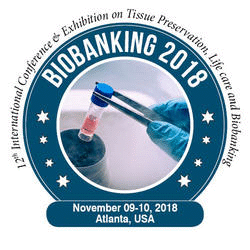
Vincent S Gallicchio
Clemson University, USA
Title: Lithium effects on stem cells advance in stem cell application in clinical medicine
Biography
Biography: Vincent S Gallicchio
Abstract
Lithium (Li) salts have been widely used in psychiatry as mood stabilizing agents for 66 years. Li is found in variable amounts in foods, especially grains, vegetables, and in various geographical areas. Additionally drinking water provides a signifi cant source of the element. Dietary intake in humans depends on location, type of foods consumed, and fl uid intake. Traces of Li have been detected in human organs and tissues, leading speculation that the element is responsible for specifi c functions in the human body. It was not until the 20th century that studies performed in the 1970's and 1990's, primarily in chickens, cows, goats, and rats, maintained on Li defi cient diets demonstrated higher mortality, and altered reproductive and behavioral abnormalities. Such defi ciencies have not been detected in humans; however, studies performed on populations living in areas with lower Li levels in water supplies have been associated with higher rates of suicides, homicides, and the arrest rates for drug abuse and other crimes. Th us, Li appears to play a signifi cant role in early fetal development evidenced by high Li levels during the early gestational period and perhaps social behavior. Biochemically, the mechanism of Li action involves multifactor and interconnected pathways with enzymes, hormones, vitamins, transcription, and growth and transforming factors involved. Th is body of evidence now appears suffi cient to label Li as an essential element with the recommended RDA for a 70kg adult of 1mg/ day. Of extreme importance for the future is the increasing clinical data indicating Li can be used eff ectively for the treatment of acute brain injuries, e.g., ischemia and chronic neurodegenerative diseases such as Alzheimer's disease, Parkinson's disease, Tauopathies, and Huntington's disease. Th is conclusion is based on evidence showing Li as important in neurogenesis, neuronal repair, as well as protecting neurons from neurotoxicity.

